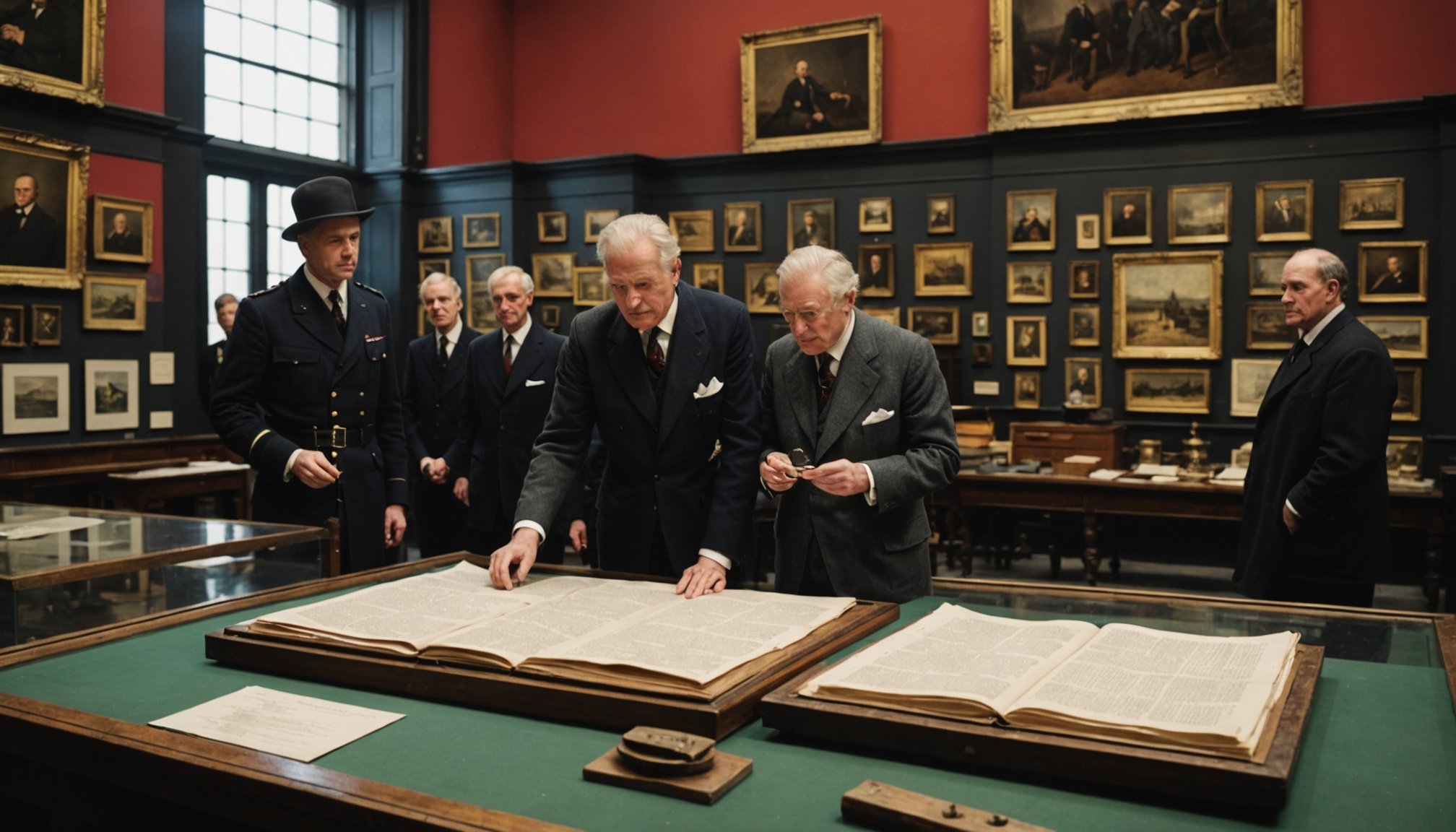Unveiling Secrets: Explore the UK Museums Featuring Fascinating Exhibits on British Espionage History
Discovering the Heart of British Espionage: Bletchley Park
When it comes to British espionage history, one place stands out as a must-visit: Bletchley Park. Located in Milton Keynes, England, Bletchley Park is more than just a museum; it is a living testament to the ingenuity and bravery of the codebreakers who played a crucial role in World War II.
The Codebreakers’ Legacy
Bletchley Park was the hub of British intelligence operations during World War II, where a team of brilliant minds, including the legendary Alan Turing, worked tirelessly to crack the German Enigma code. This feat, often credited with shortening the war by several years, is meticulously documented at the park.
In the same genre : Uncover the best uk cities for immersive guided tours exploring british brewing heritage
Upon arrival, visitors can explore the very rooms where Turing and his colleagues worked. The museum is filled with artifacts, including the original Enigma machines, and interactive exhibits that explain the complex process of codebreaking. Sir John Dermot Turing, Alan Turing’s nephew and author of several books on his uncle’s life, often joins tours to provide firsthand insights into the history and significance of Bletchley Park[1].
The Unsung Heroes: Y-Stations and Women in Espionage
One of the lesser-known but equally fascinating aspects of British espionage is the role of the Y-Stations. These stations, such as Beaumanor Hall and Chicksands, were where thousands of women listened to German radio traffic and recorded coded messages. These messages were then sent to Bletchley Park for decryption.
Additional reading : Unearth the uk towns that breathe life into traditional british storytelling
The Silent Contributors
The women at the Y-Stations were bound by the Official Secrets Act, meaning they could not discuss their wartime contributions for decades after the war. A visit to these former Y-Stations, included in some tours, highlights the critical yet often overlooked role these women played in the war effort[1].
Exploring London’s Espionage Heritage
London, the capital city of England, is home to several museums and landmarks that offer a glimpse into Britain’s rich espionage history.
MI5 and MI6: The Heart of British Intelligence
Thames House, the former home of MI5 from 1934 to 1939, and Vauxhall Cross, the current home of MI6, are significant locations for anyone interested in British intelligence. Guided tours can provide insights into the operations of these agencies throughout the 20th century. For instance, the story of Josef Jakobs, a German spy executed in the Tower of London during World War II, is a compelling example of the Double Cross System used by British intelligence[1].
The Imperial War Museum
The Imperial War Museum in London boasts an impressive collection of artifacts from World War I to the present, including items related to espionage and intelligence operations. Visitors can engage in activities such as a “spy training school” where they learn about communication techniques, surveillance, and evasion. This interactive approach makes the museum a unique and engaging experience[1].
Other Notable Museums and Locations
The National Museum of Computing
Located within Bletchley Park, the National Museum of Computing is a treasure trove for those interested in the science and technology behind espionage. The museum hosts various events, including the upcoming DevFest @ Bletchley Park 2025, which will focus on Responsible AI and its implications. This event is a great opportunity to explore how modern technology is shaping the future of intelligence and computing[2].
The Royal Air Force Museum
While primarily focused on aviation history, the Royal Air Force Museum in Hendon, London, also has exhibits related to aerial espionage. The museum’s collection includes aircraft used for reconnaissance and spy missions, such as the U-2 spy plane shot down over the Soviet Union in 1960. This adds a fascinating layer to the broader narrative of British espionage[5].
Practical Insights and Tips for Visitors
Planning Your Visit
- Bletchley Park: Open daily, with guided tours available. Be sure to check the schedule for special events and lectures by experts like Sir John Dermot Turing[1].
- Imperial War Museum: Open daily, with free admission. Plan your visit to include the interactive spy training activities[1].
- National Museum of Computing: Check the event calendar for specific dates and times. Early bird tickets for events like DevFest can offer significant savings[2].
What to Expect
- Interactive Exhibits: Many of these museums offer hands-on experiences, such as decoding messages at Bletchley Park or participating in spy training at the Imperial War Museum.
- Expert Guides: Guided tours, especially those led by experts or descendants of key figures, can provide invaluable insights and anecdotes.
- Special Events: Keep an eye on event calendars for unique experiences like lectures, workshops, and festivals.
A Detailed Look at Museum Collections
Here is a comparative table of some of the key museums and their collections related to British espionage history:
| Museum | Location | Key Exhibits and Collections |
|---|---|---|
| Bletchley Park | Milton Keynes, England | Enigma machines, codebreaking exhibits, Alan Turing’s office, Y-Stations artifacts |
| Imperial War Museum | London, England | Spy training school, artifacts from World War I and II, including espionage-related items |
| National Museum of Computing | Bletchley Park, England | Early computers, AI exhibits, historical computing artifacts |
| Royal Air Force Museum | Hendon, London, England | Aerial reconnaissance aircraft, U-2 spy plane wreckage, aviation memorabilia |
| Tower of London | London, England | Exhibits on German spies executed during World War I and II, including Josef Jakobs’ story |
Quotes and Anecdotes
- “The staff at Bletchley Park could not do it all on their own… Our visits to the former Y-Stations will highlight the work of thousands of women who listened to German radio traffic and dutifully recorded the coded messages.” – Stephen J. Watson, National WWII Museum[1].
- “The first International AI Safety Summit was held last year, and this year’s focus on Responsible AI couldn’t be more timely.” – National Museum of Computing, on the upcoming DevFest @ Bletchley Park 2025[2].
Exploring the museums and locations dedicated to British espionage history is a journey through time, revealing the intricate web of intelligence operations that shaped the course of wars and global events. From the codebreakers of Bletchley Park to the spy training schools of the Imperial War Museum, each location offers a unique and engaging experience that delves deep into the world of espionage.
Whether you are a history buff, a science enthusiast, or simply someone fascinated by the art of espionage, these museums in England provide an unparalleled opportunity to uncover the secrets and stories that have defined British intelligence. So, pack your bags, grab your magnifying glass, and get ready to unravel the mysteries of Britain’s espionage history.











